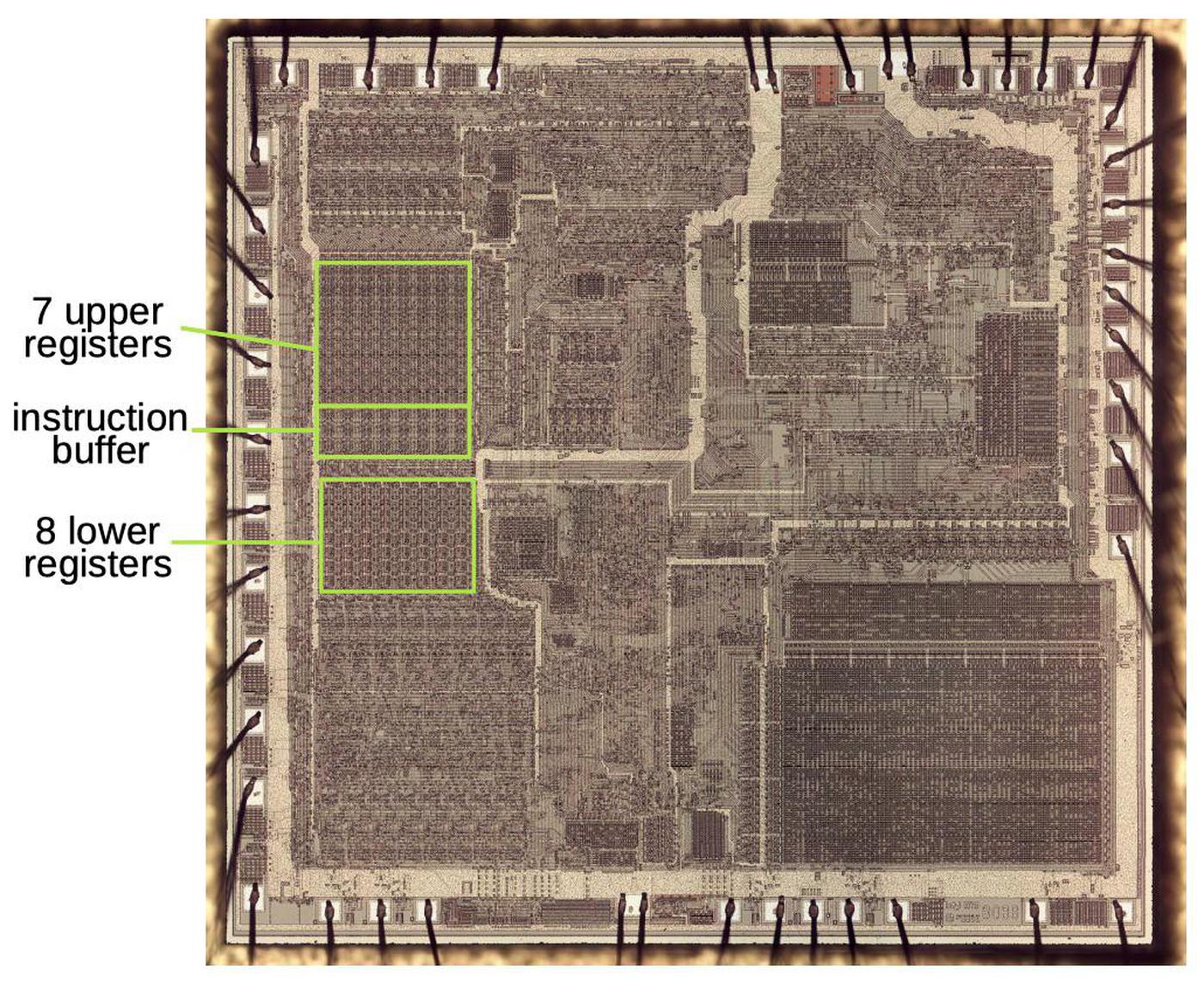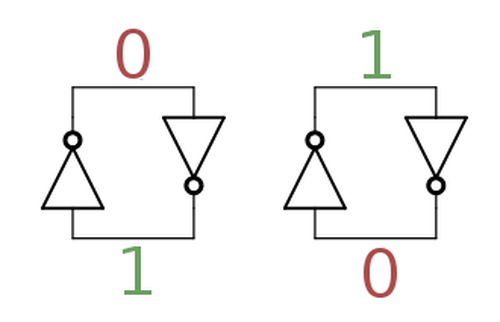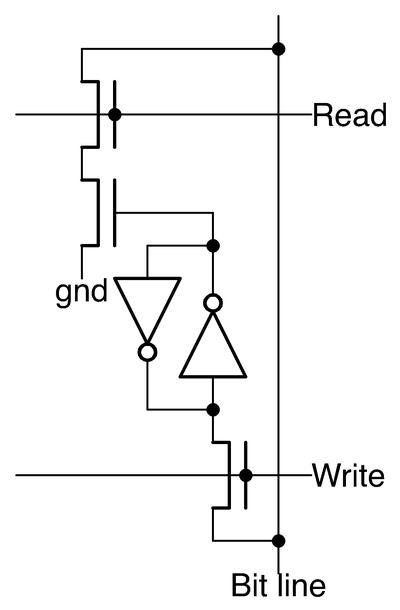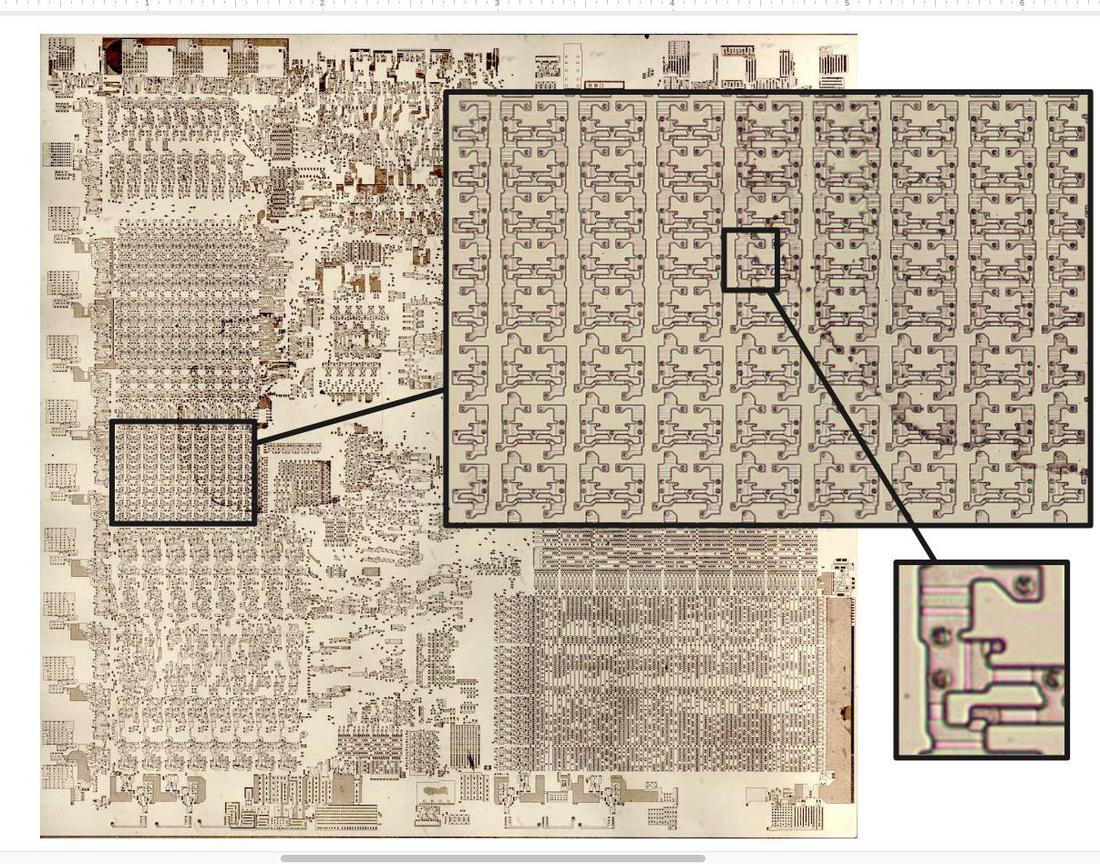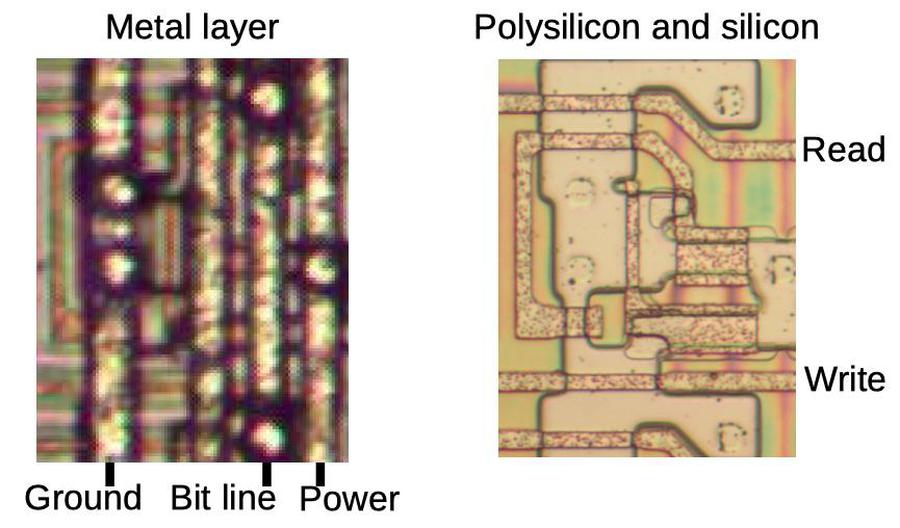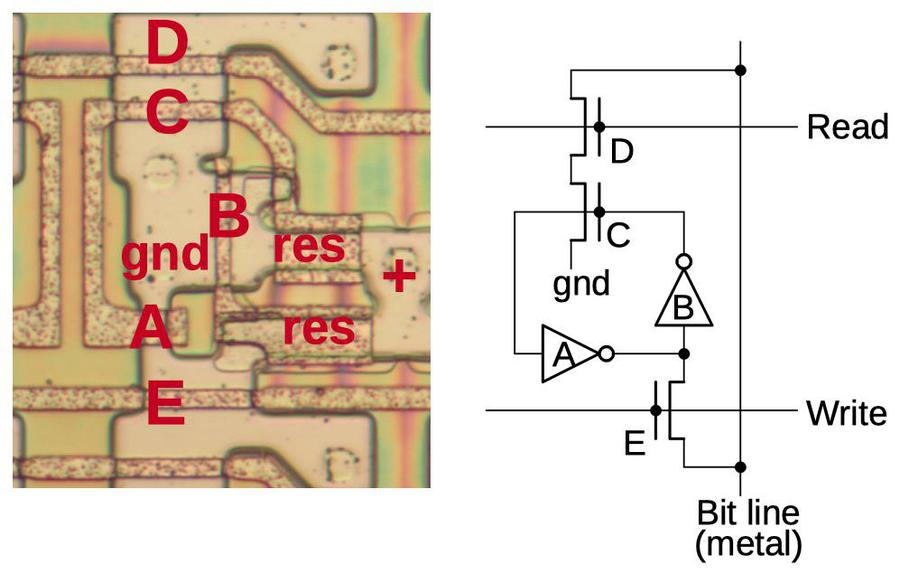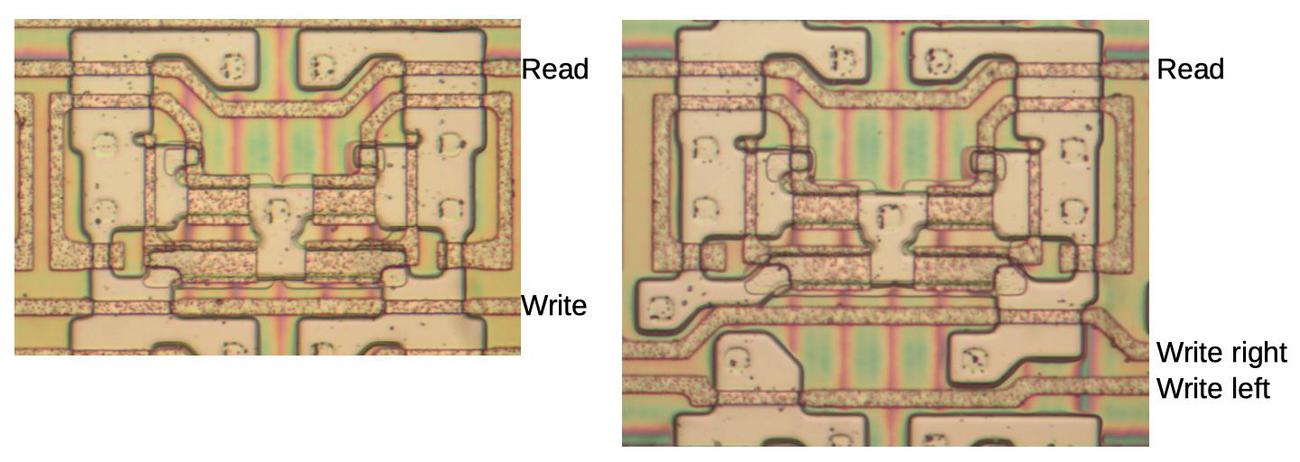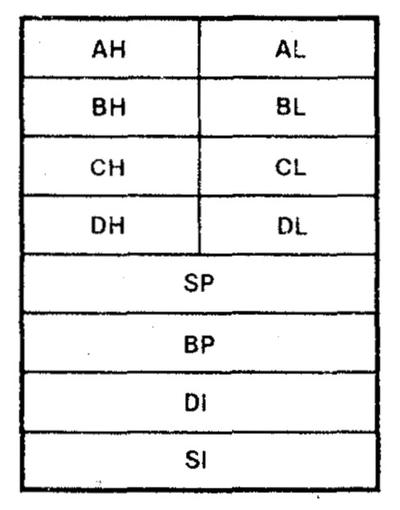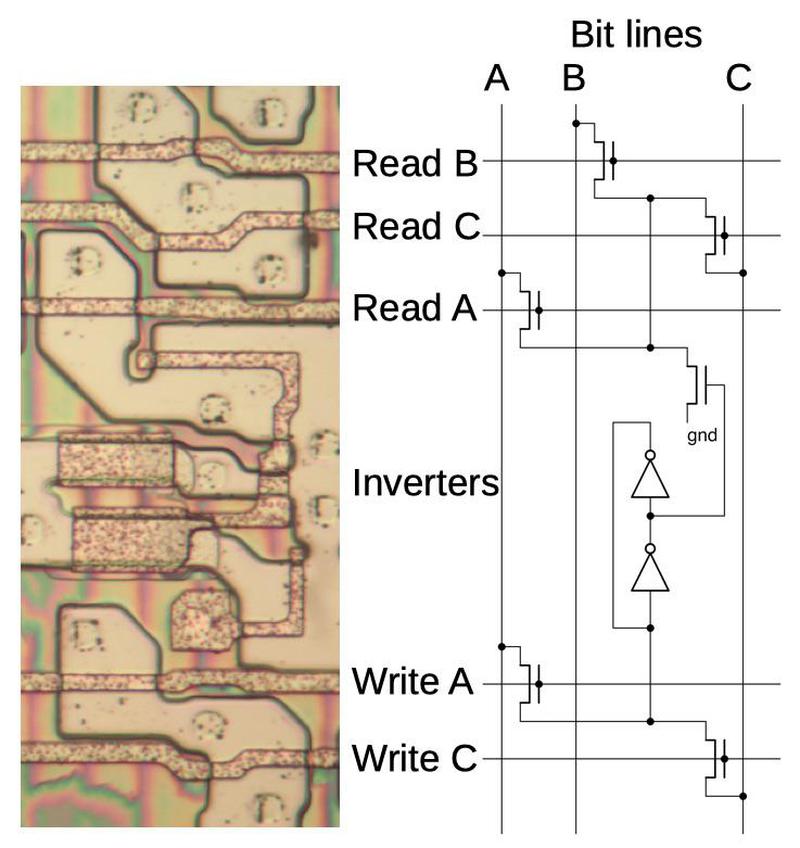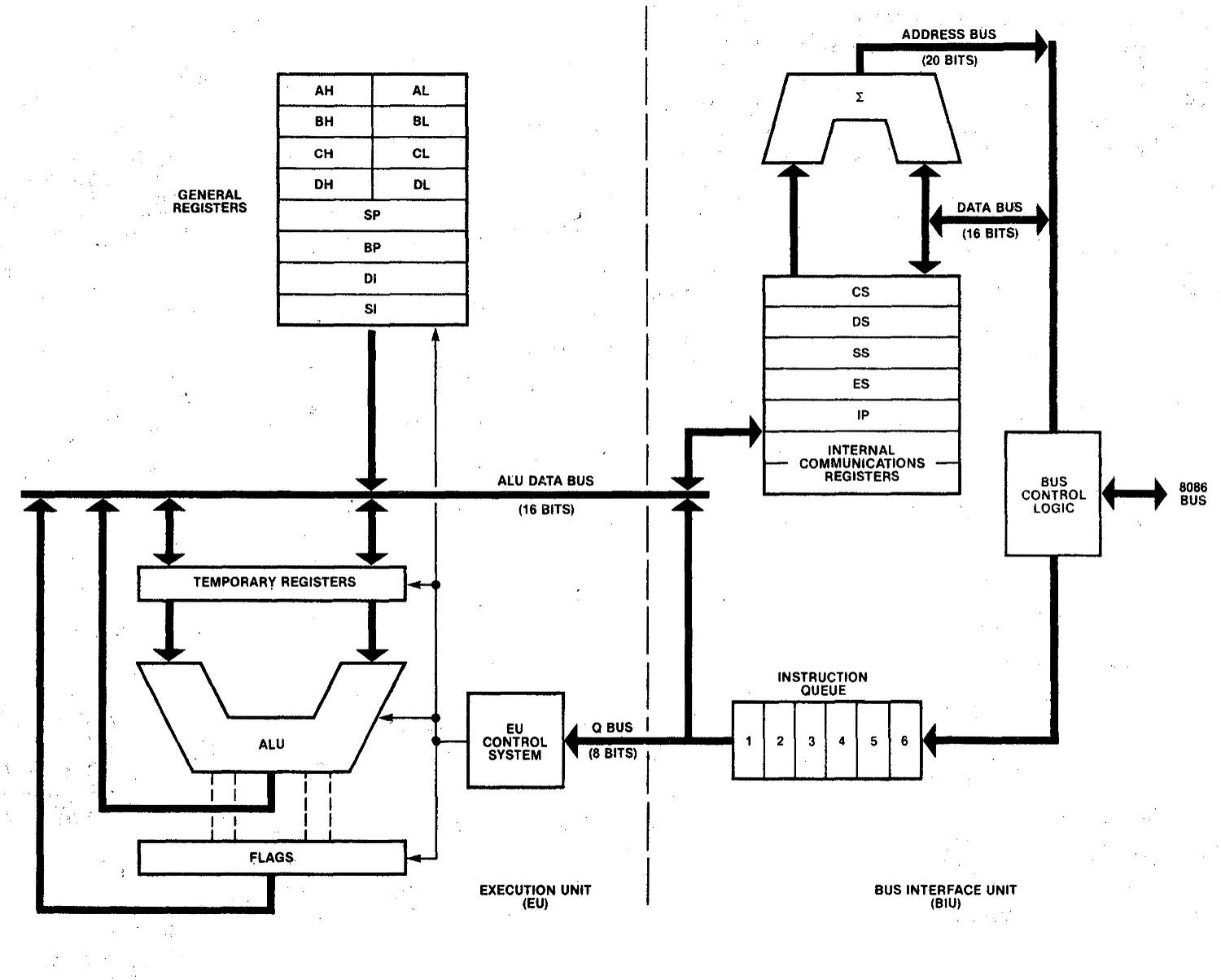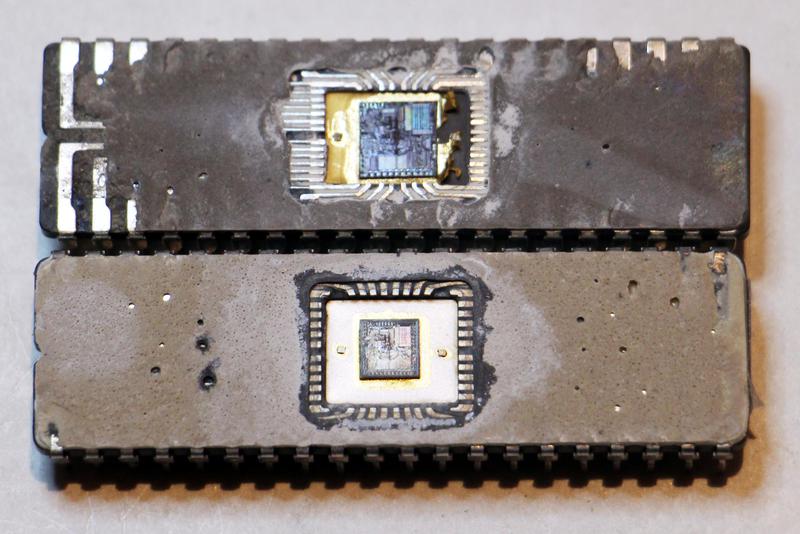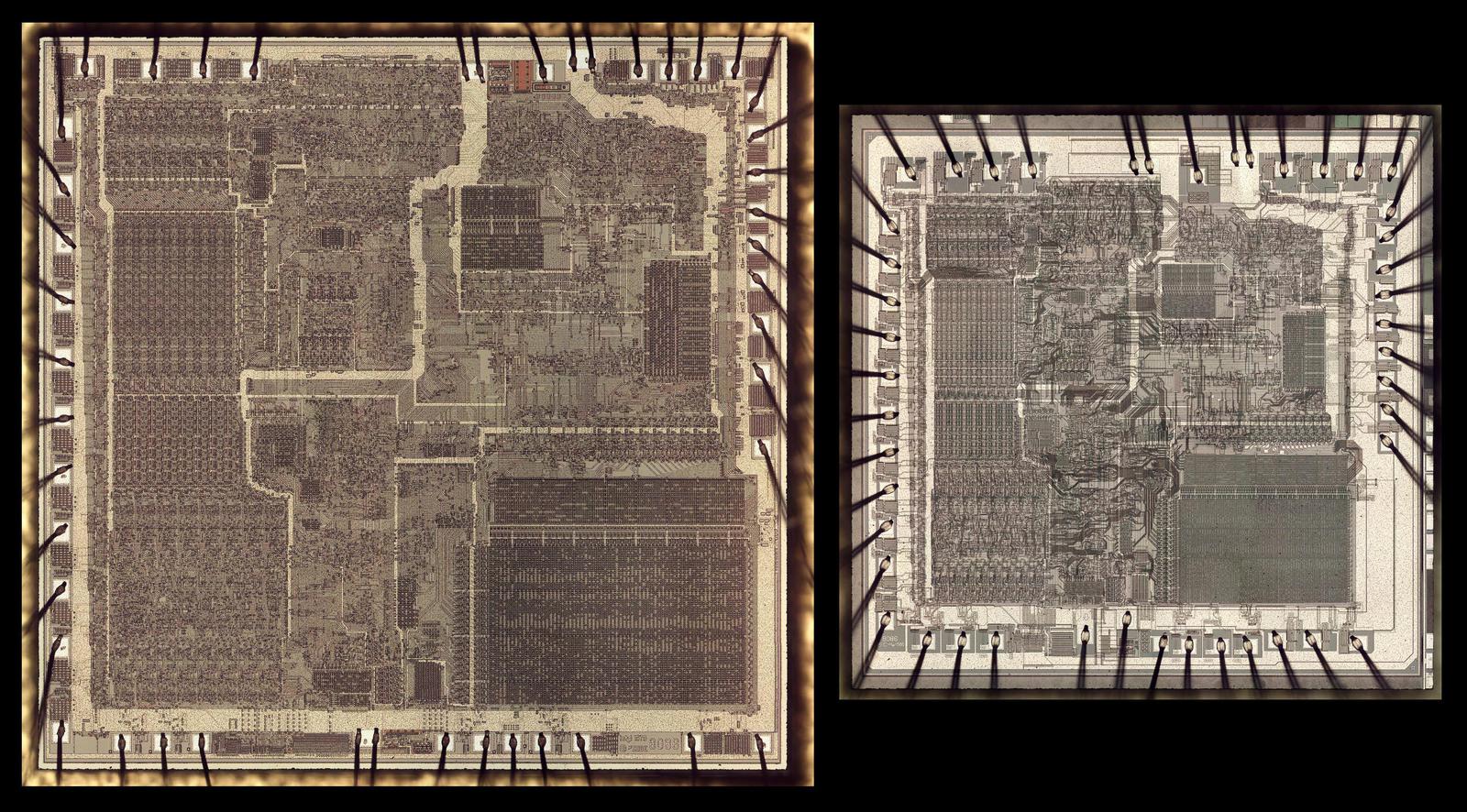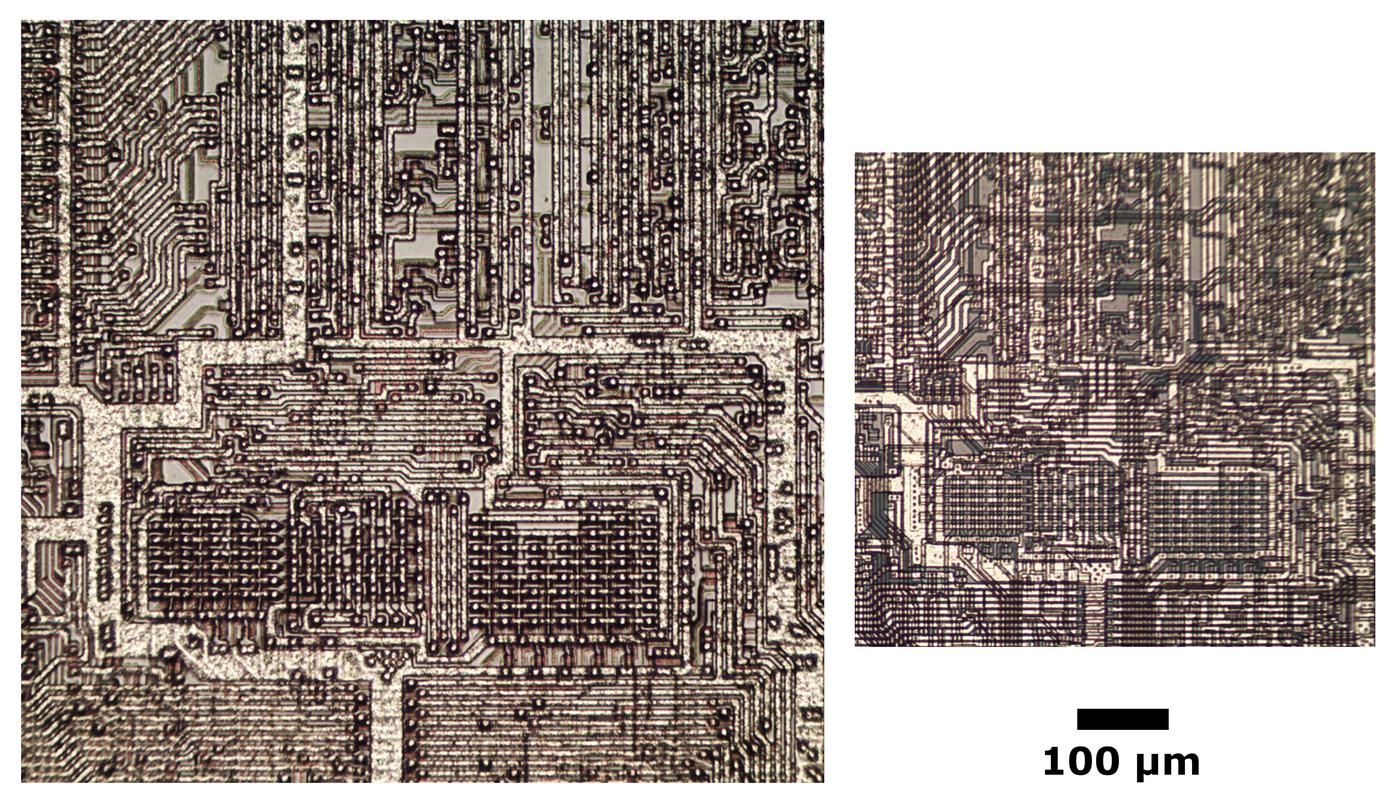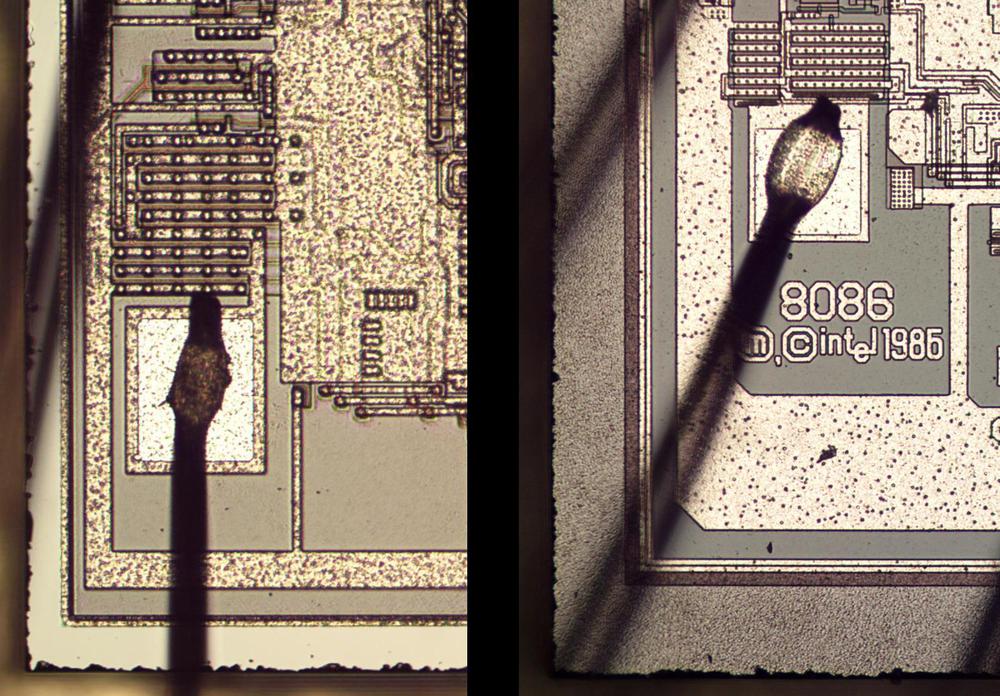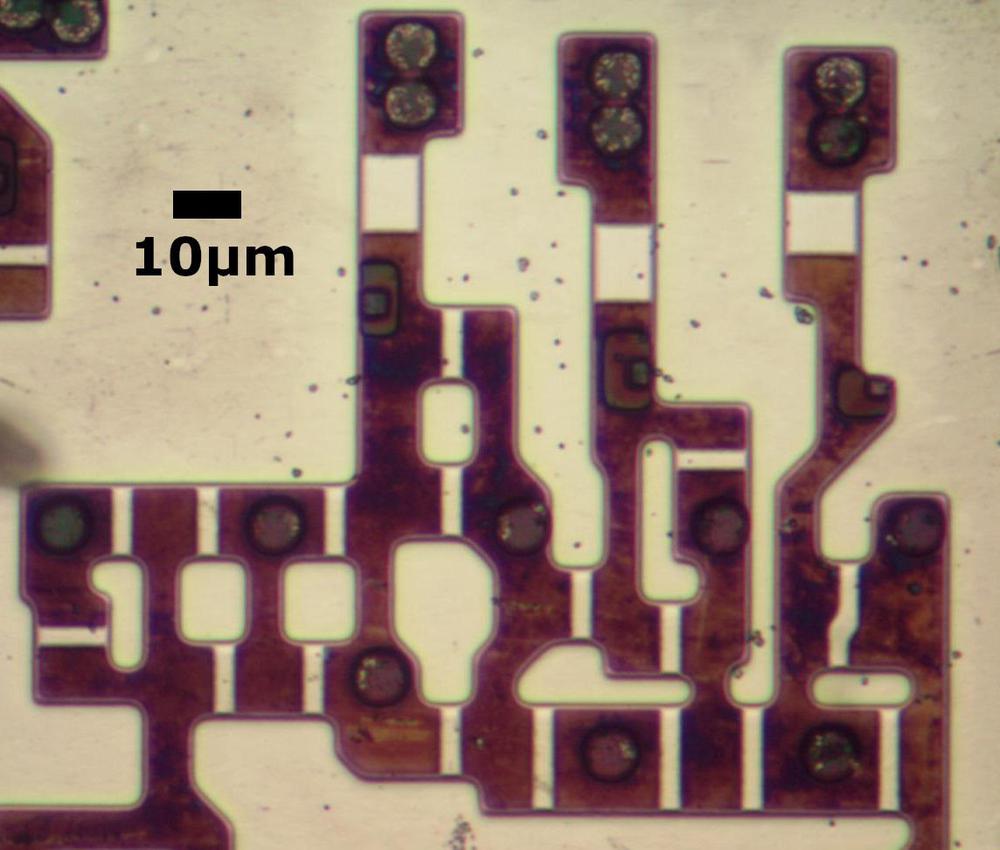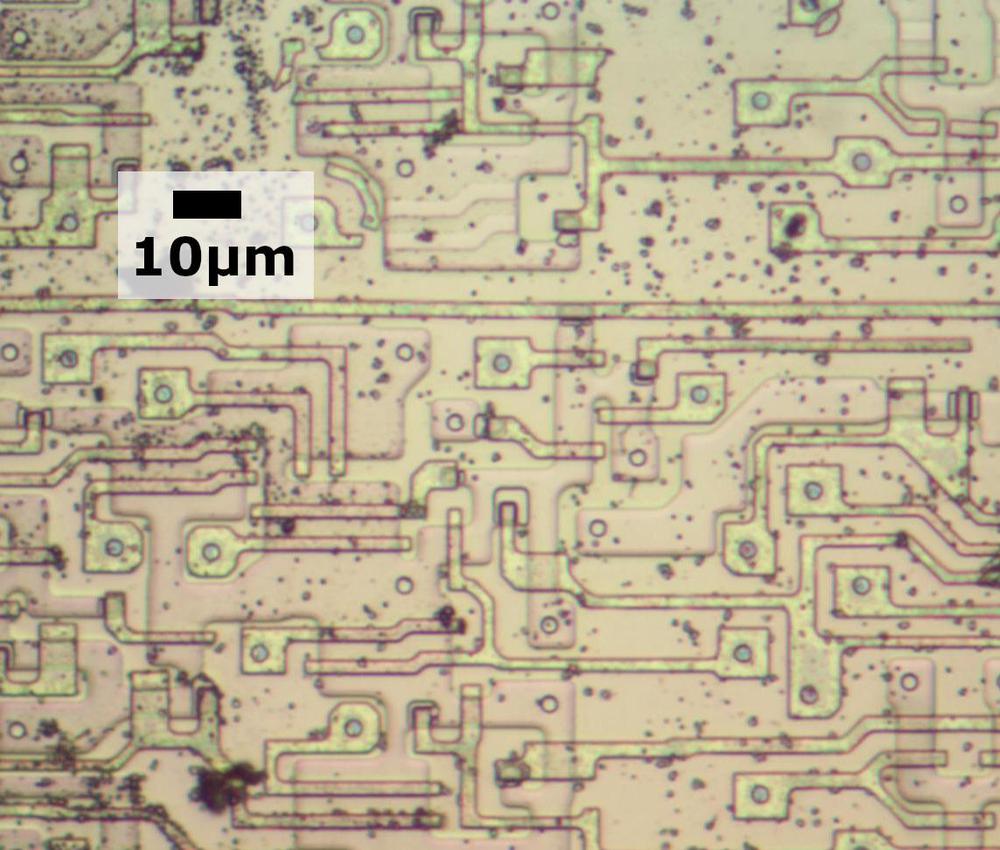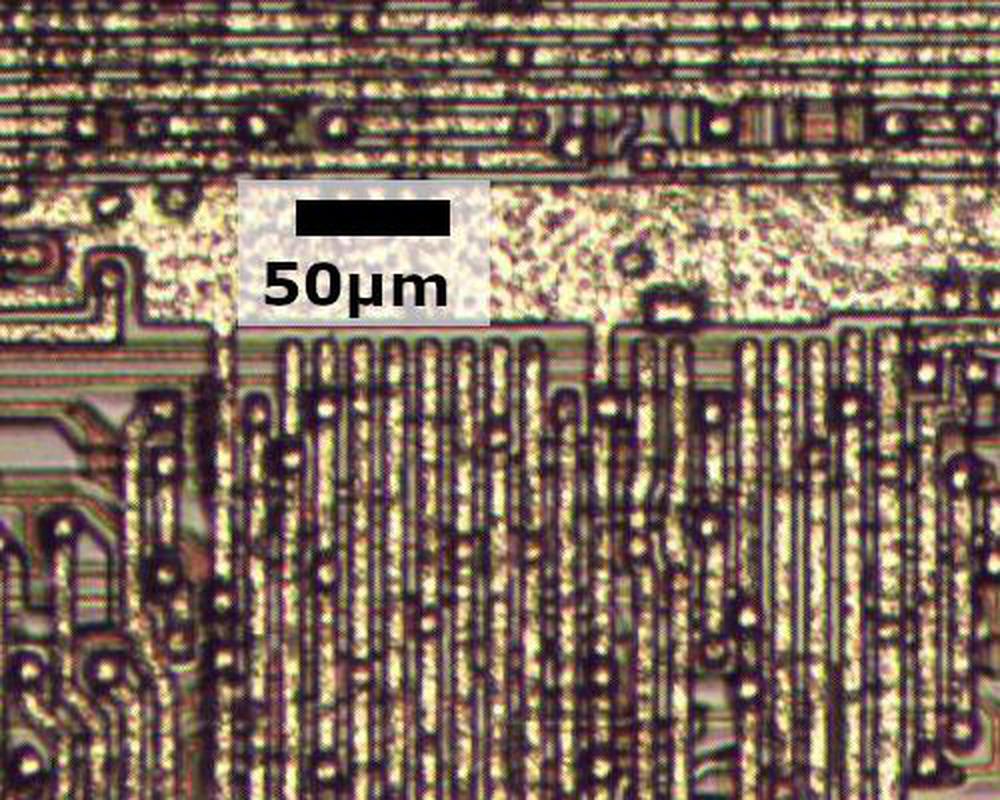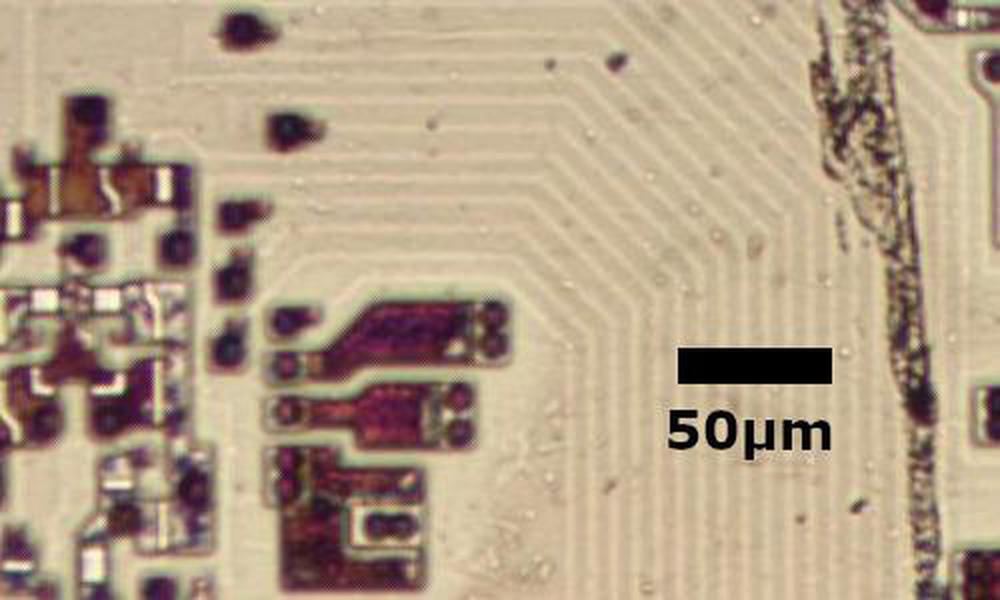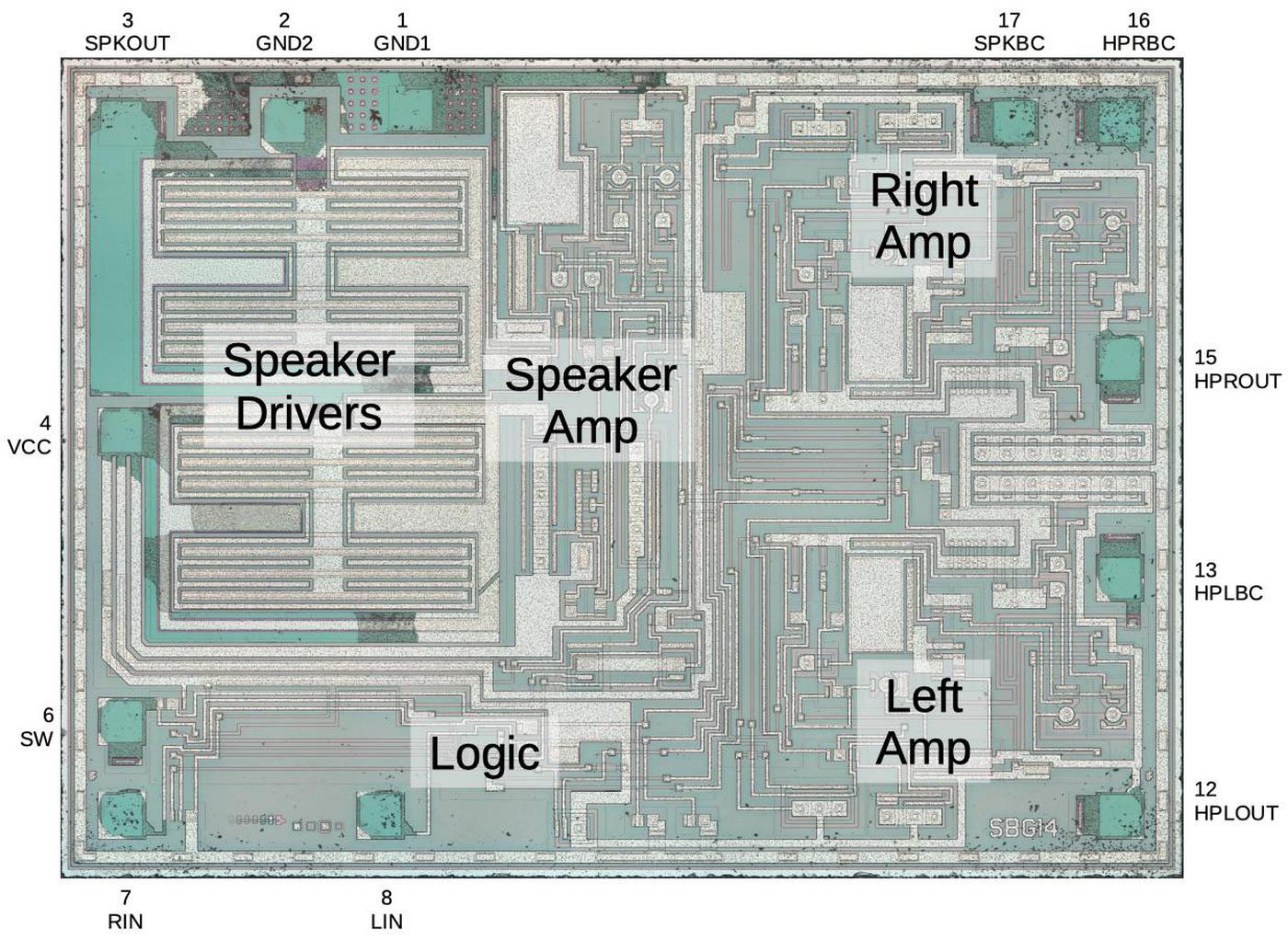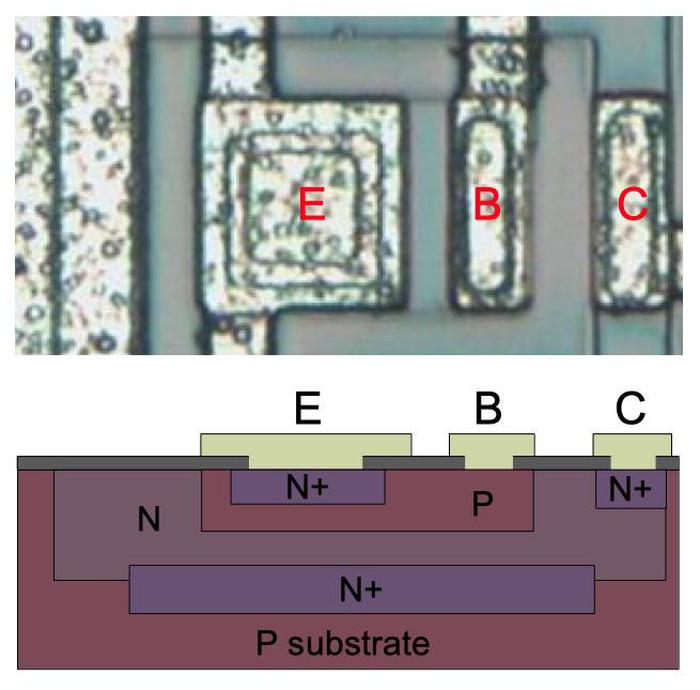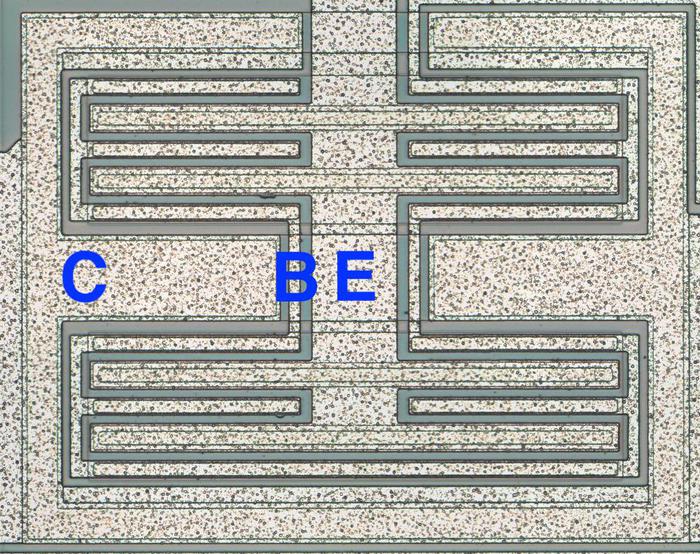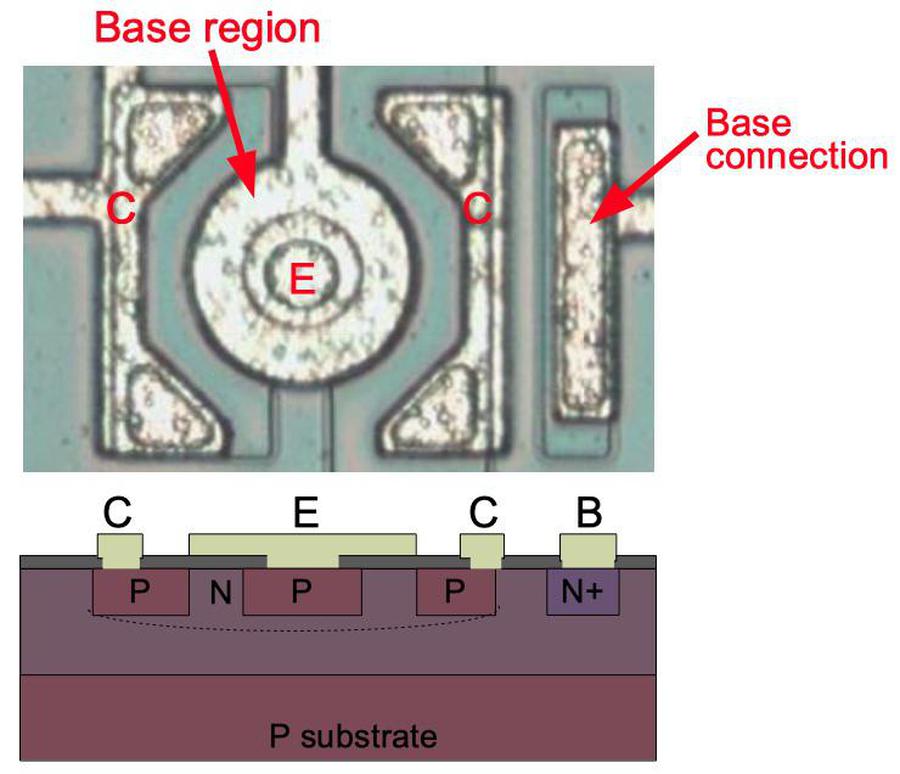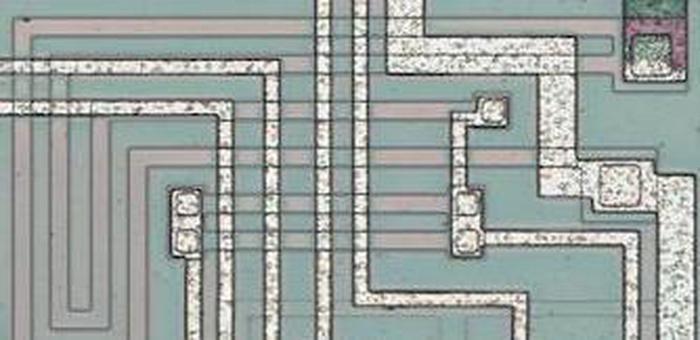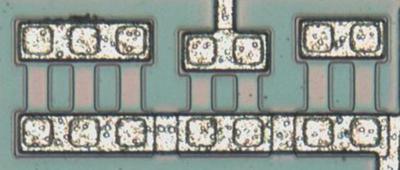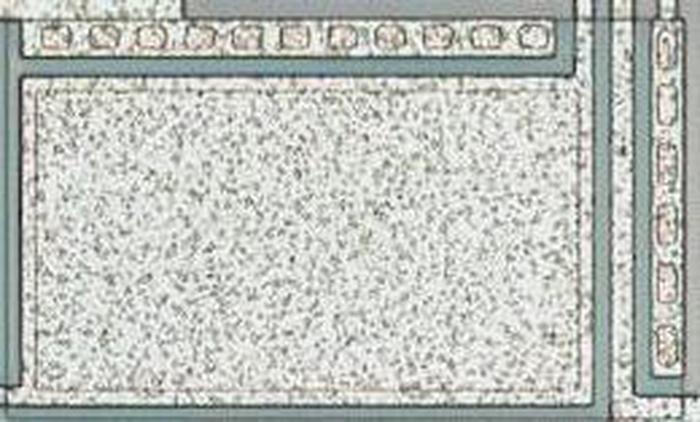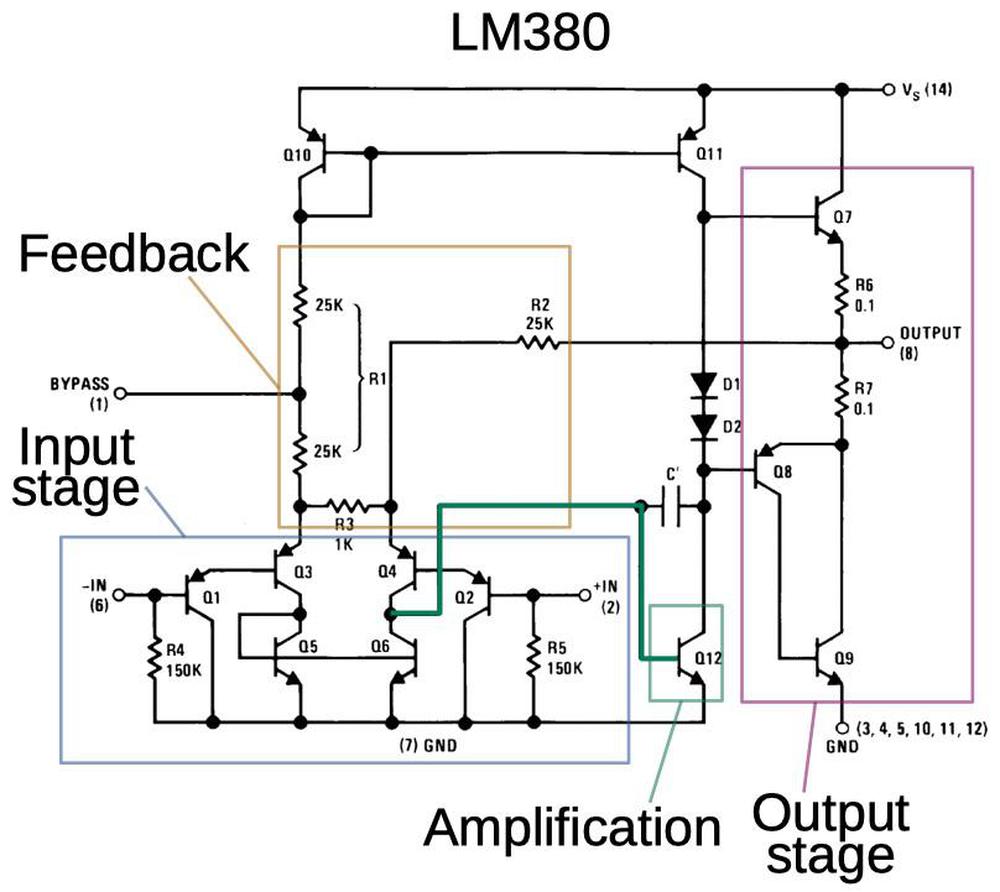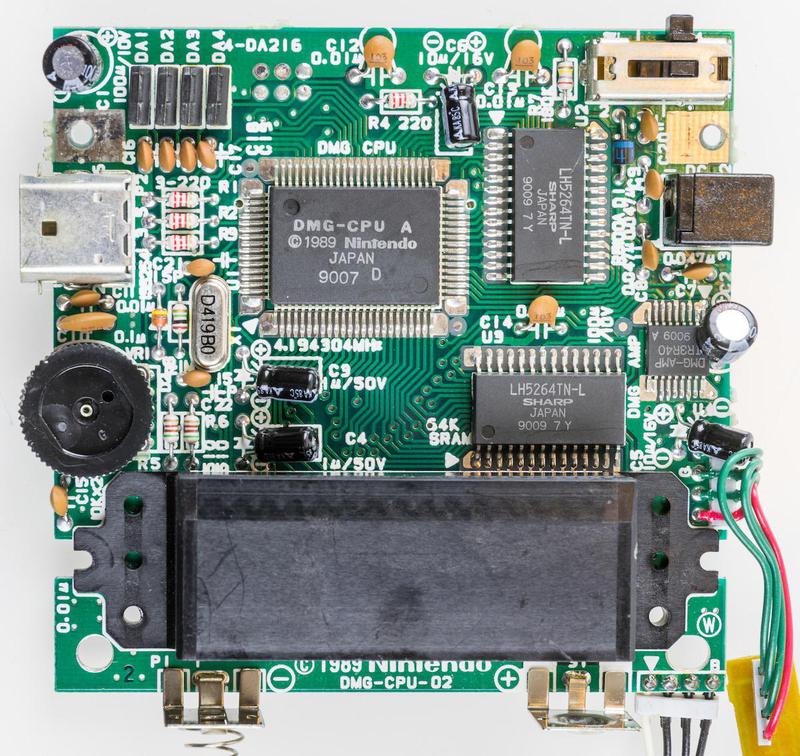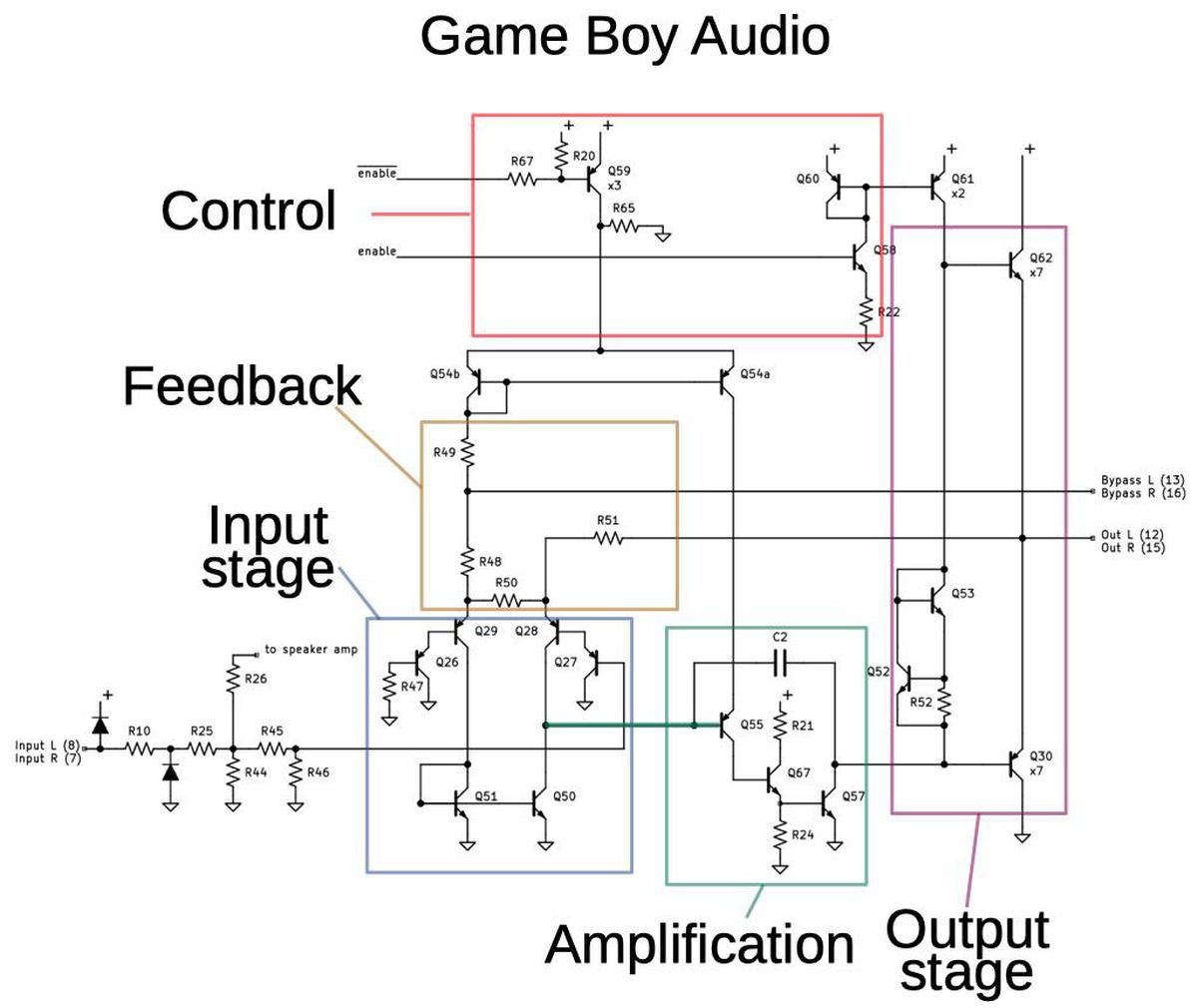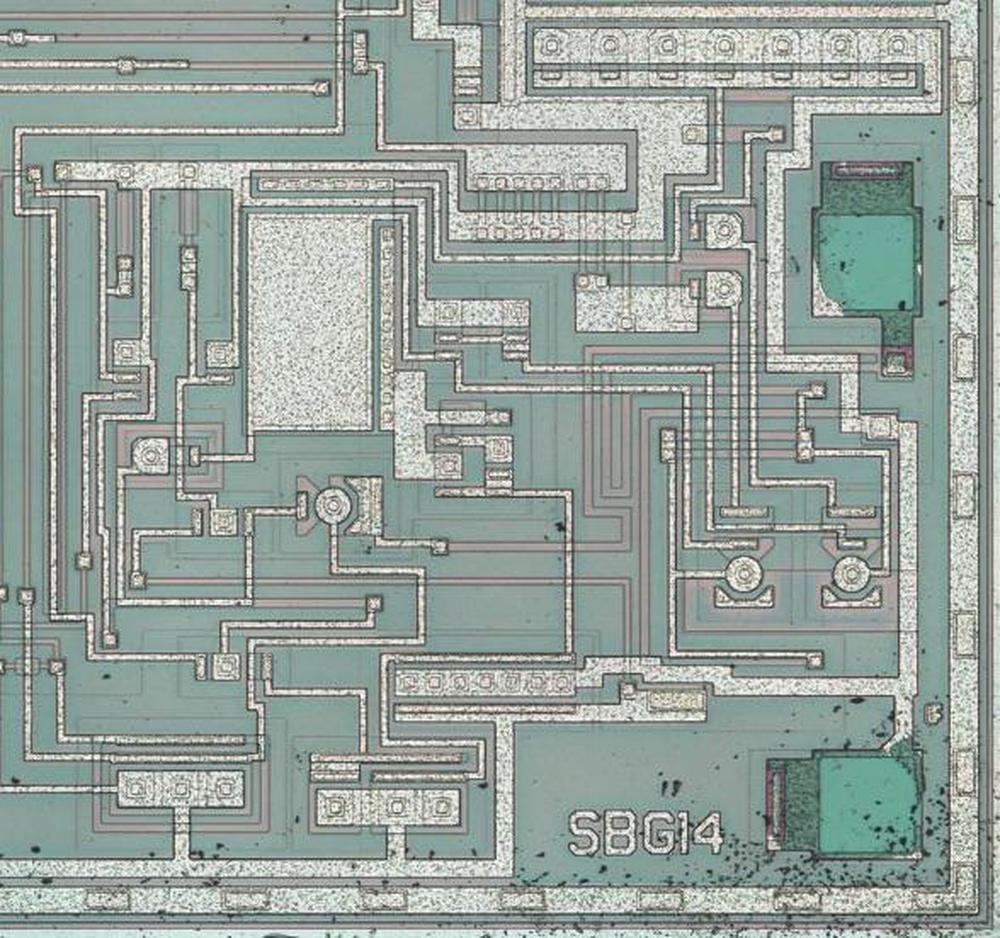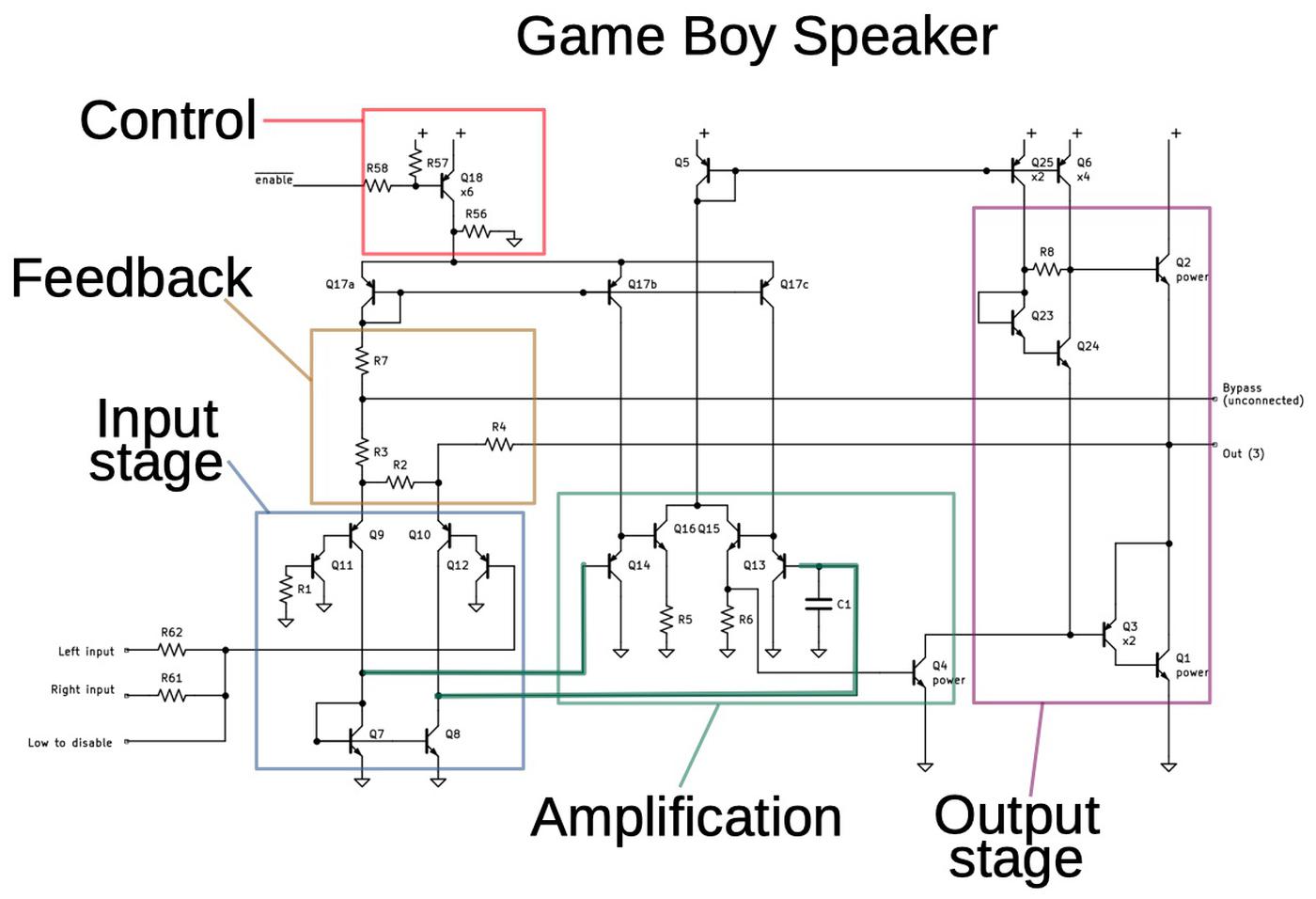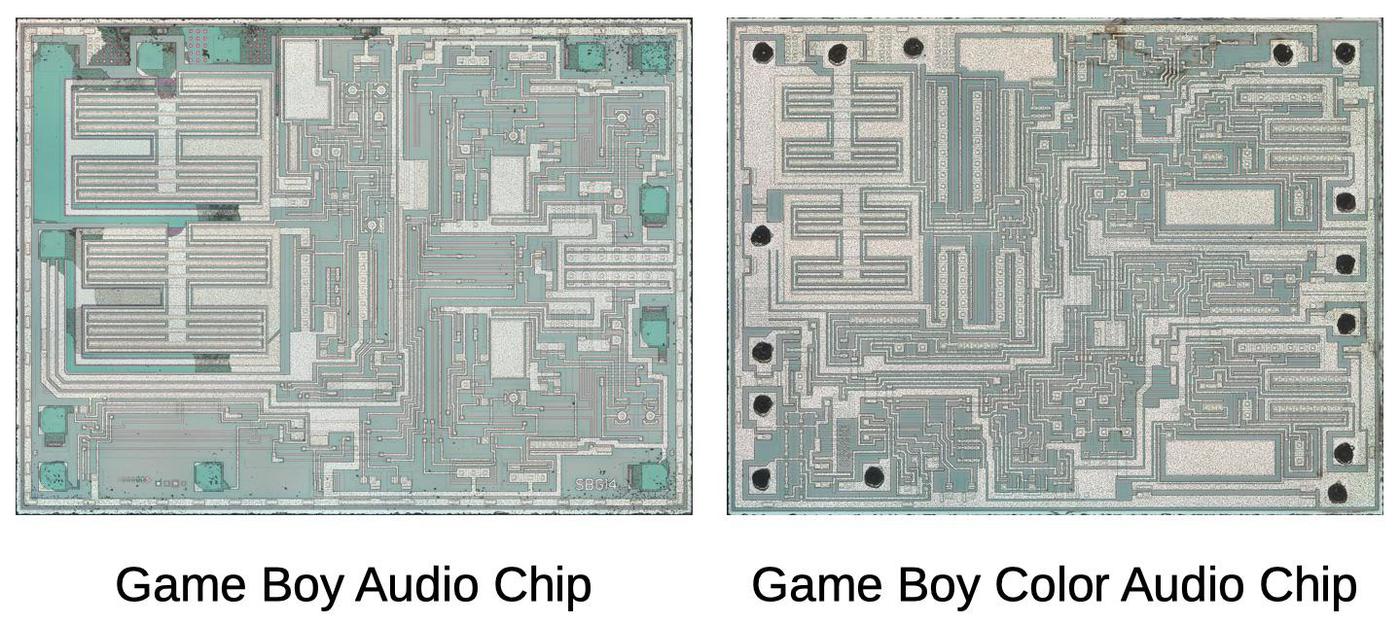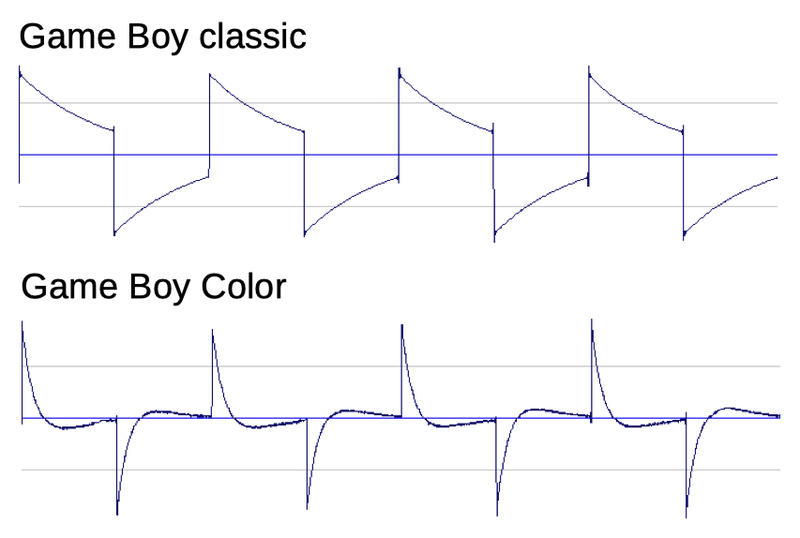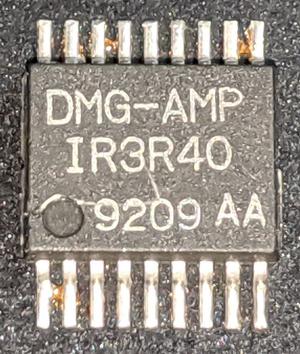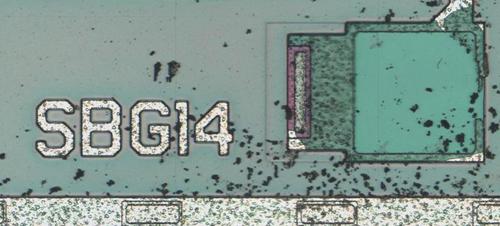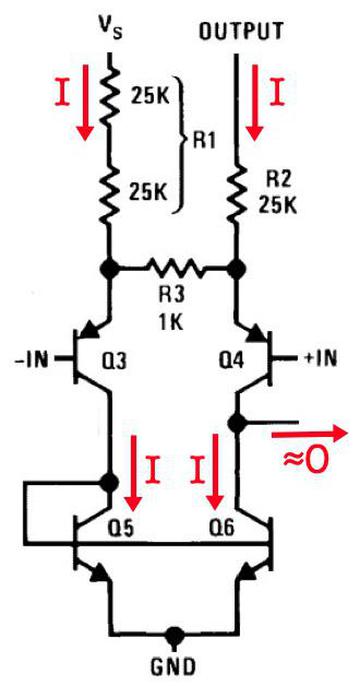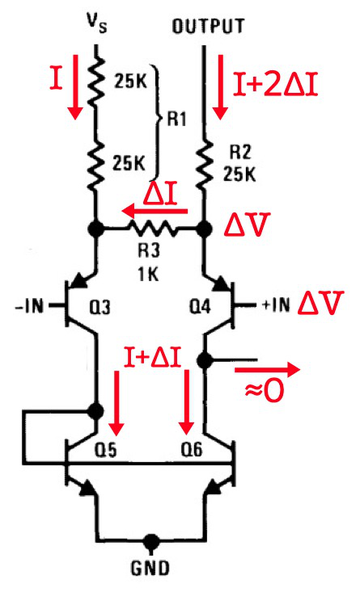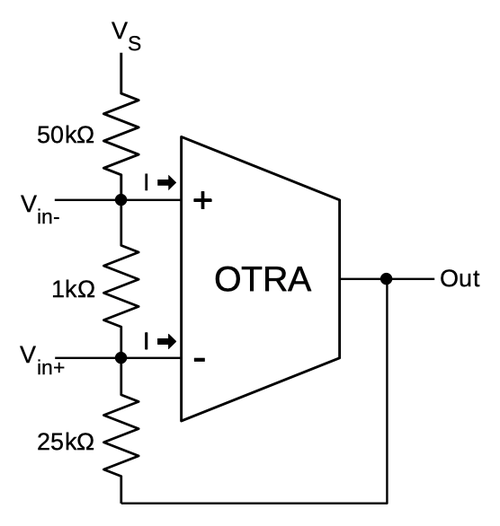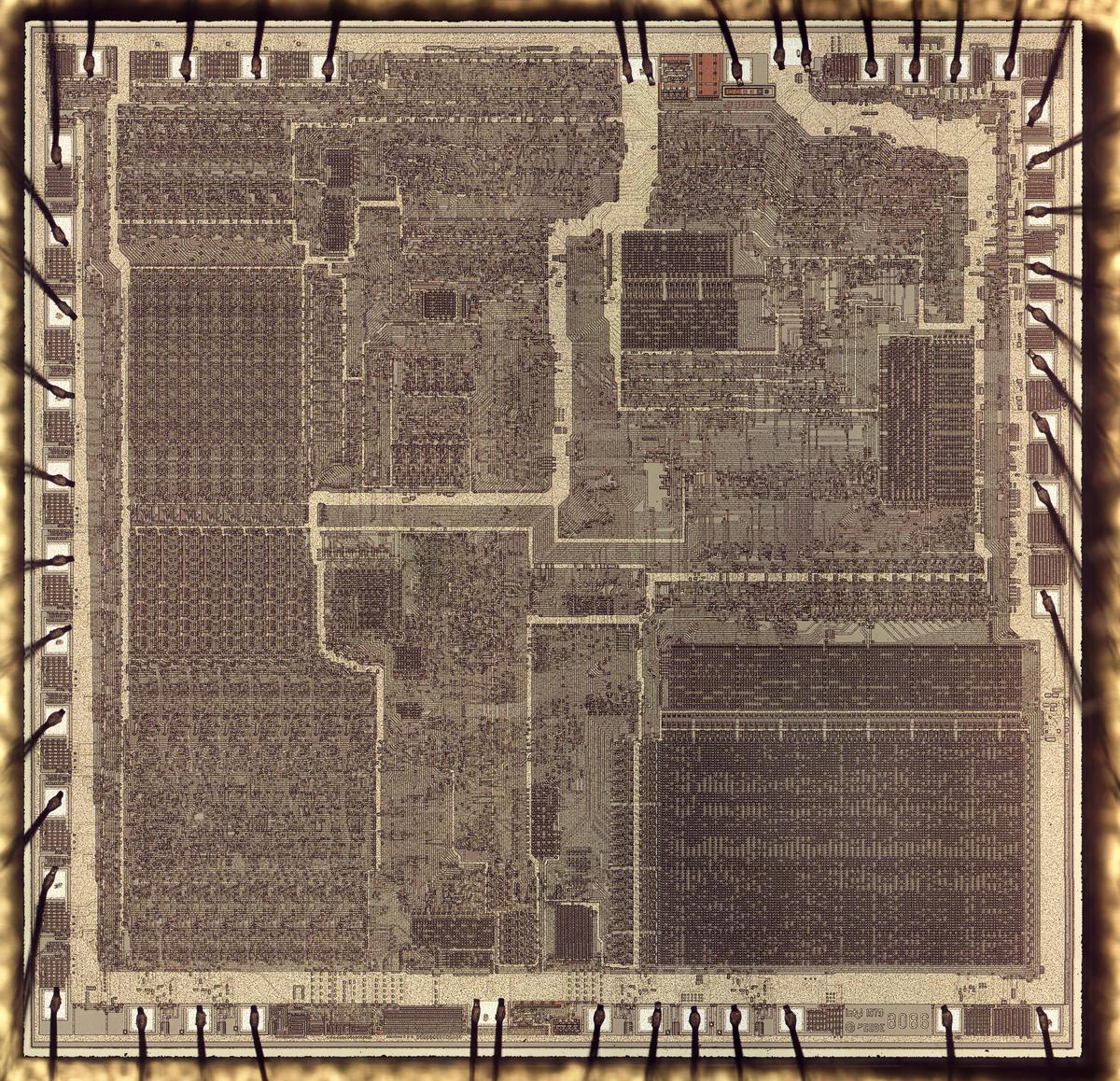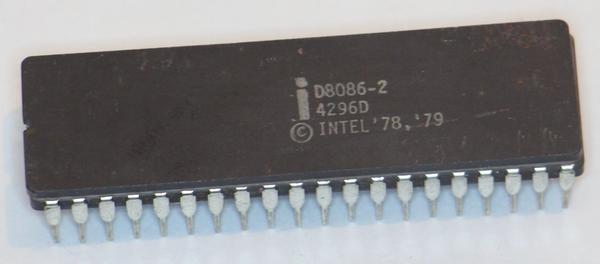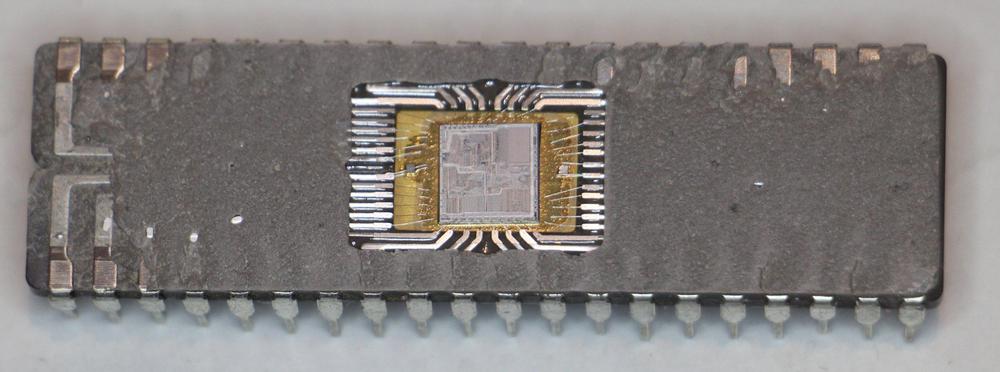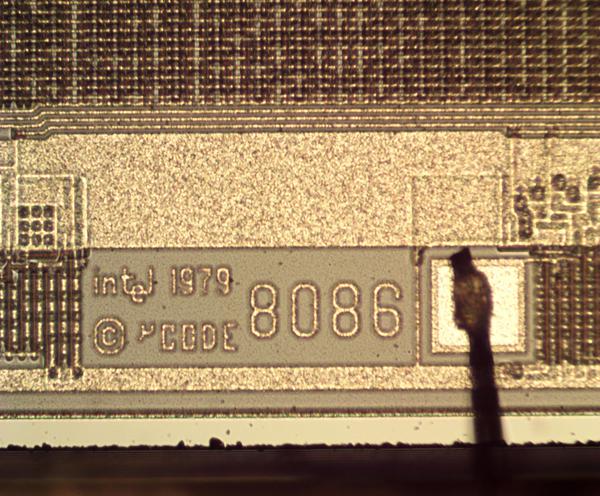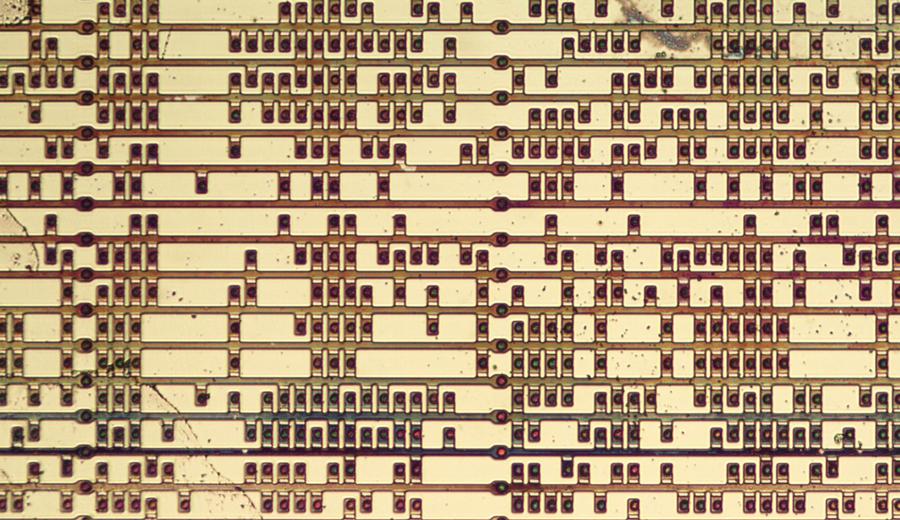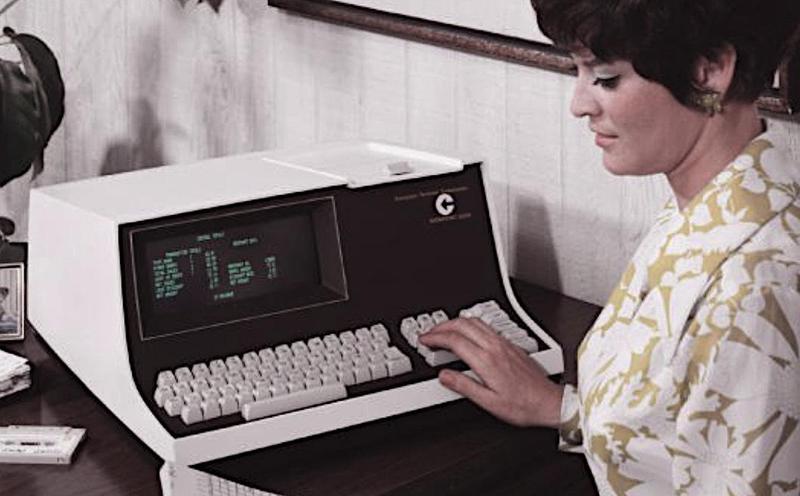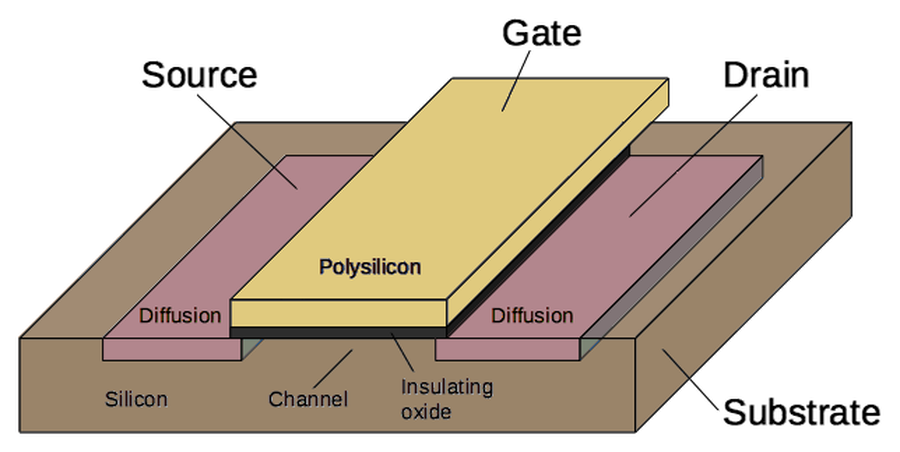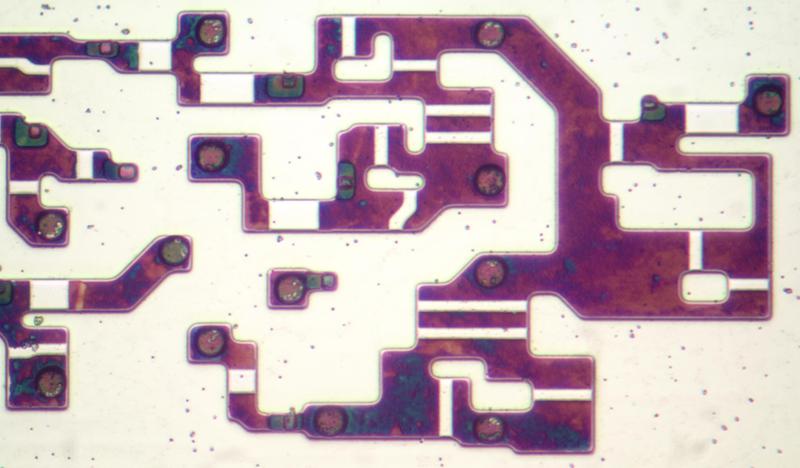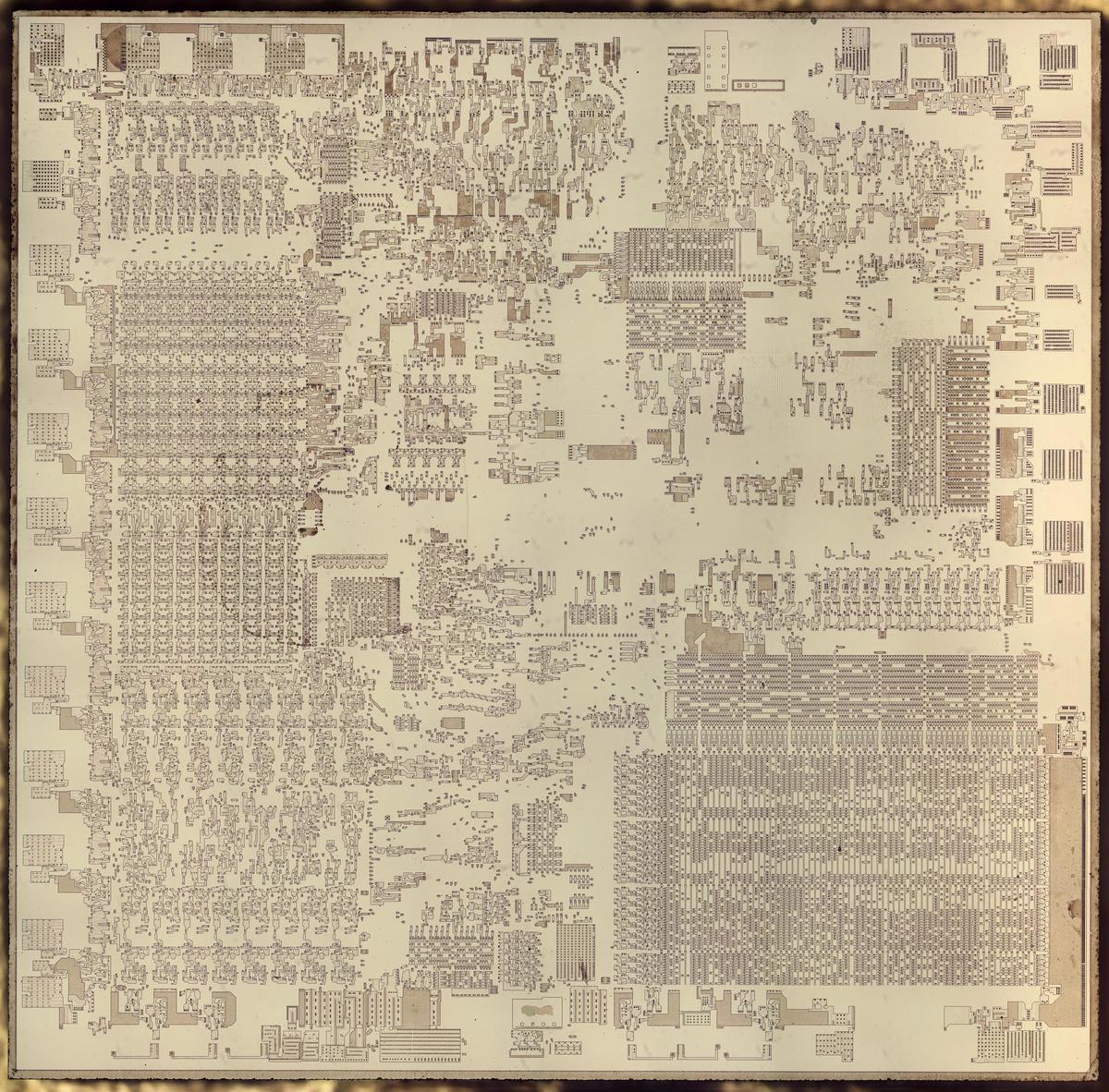The Intel 8086 microprocessor is one of the most influential chips ever created; it led to the x86 architecture that dominates desktop and server computing today. I've been reverse-engineering the 8086 from die photos, and in this post I discuss how its register file is implemented.
The photo above shows the silicon die of the 8086 processor under a microscope. The metal layer on top of the chip is visible, with the silicon hidden underneath. Around the outside edge, bond wires connect pads on the die to the chip's 40 external pins.
The highlighted region indicates the 8086's fifteen 16-bit registers and six bytes of instruction prefetch queue.1 Registers take up a significant portion of the die, even though they are just 36 bytes in total. Due to space limitations, early microprocessors had a relatively small number of registers; in comparison, a modern processor chip has kilobytes of registers and megabytes of cache storage.2
How a register is implemented in silicon
I'll start by explaining how the 8086 is built from NMOS transistors. Then I'll explain how an inverter is constructed, how a single bit is stored using inverters, and how a register is constructed.
The 8086 and other chips of that era were built from a type of transistor called NMOS. These chips consisted of a silicon substrate, which was "doped" by diffusion of arsenic or boron to form transistors. Above the silicon, polysilicon wiring created the gates of the transistors and wired components together. Finally, a metal layer on top provided more wiring. (Modern processors, in comparison, use CMOS technology, which combines NMOS and PMOS transistors, and they have many metal layers.)
The schematic below shows an inverter built from an NMOS transistor and a resistor3 With a low input, the transistor is off, so the pull-up resistor pulls the output high. With a high input, the transistor turns on, connecting ground and the output, pulling the output low. Thus, the input signal is inverted.
The photo above shows how an inverter is physically constructed in the 8086. The pinkish regions are conductive doped silicon and the sparkly copper-colored lines are polysilicon on top. A transistor is created where polysilicon crosses silicon: the polysilicon forms the transistor's gate, while the silicon regions on either side are the transistor's source and drain. The large polysilicon rectangle forms the pull-up resistor between +5 volts and the output. Thus, the chip's circuitry matches the inverter schematic. Under a microscope, circuits such as this inverter are visible and can be reverse-engineered.
The building block for the registers is two inverters in a feedback loop, storing a single bit, as shown below. If the top wire has a 0, the right inverter will output a 1 to the bottom wire. The left inverter will then output a 0 to the top wire, completing the cycle. Thus, the circuit is stable and will "remember" the 0. Likewise, if the top wire is a 1, this will get inverted to a 0 at the bottom wire, and back to a 1 at the top. Thus, this circuit can store either a 0 or a 1, forming a 1-bit memory.
Three transistors are added to make a usable register cell from the inverter pair.4 One transistor selects the cell for reading, another transistor selects the cell for writing, and the third amplifies the signal when reading. In the center of the schematic below, two inverters store the bit. To read the bit, the read line is energized. This connects the inverter output to the bit line through the amplifying transistor. To write the bit, the write line is energized, connecting the bit line to the inverters. By putting a high-current 0 or 1 signal on the bit line, the inverters (and thus the stored bit) are forced to the desired value. Note that the bit line is used for both reading and writing.
The register file consists of a matrix of register cells like the one above. The matrix is 16 cells wide since registers are 16 bits wide. Each register is arranged horizontally, so a read line or write line select all the cells for a particular register. The 16 vertical bit lines form a bus, so all 16 bits in the selected register are read or written in parallel.
The photo below zooms in on the 8086's general-purpose register file, showing the matrix of register cells: 16 columns and 8 rows for eight 16-bit registers. It then zooms in on a single register cell in the register file. I'll now explain how this cell is implemented.
The 8086 is constructed from doped silicon and polysilicon wiring with metal wiring on top. The left photo below shows the vertical metal wiring of a register cell. The ground, power, and bit line wires are indicated. (The remaining wire crosses the register file but isn't connected to it.) In the right photo, the metal layer has been dissolved to show the polysilicon and silicon underneath. The read and write lines are horizontal polysilicon wires. (Because the chip has only one layer of metal, the register uses metal for the vertical lines and polysilicon for the horizontal lines so they don't run into each other.) The connections (called vias) between the metal and the silicon are visible as brighter circles in the metal photo and as circular spots in the silicon photo.
The diagram below shows how the physical layout of the register cell matches up with the schematic. The inverters are formed from transistors A and B, along with the resistors. Transistors C, D, and E are formed by the labeled strips of polysilicon. The bit line is not visible below, since it is in the metal layer. Note that the layout of the memory cell is highly optimized to minimize its size. Also note that transistor A is much smaller than the other transistors; inverter A has a weak output so it can be overpowered by the bit line when a value is written.
8-bit register support
Careful examination of the die shows that some of the register cells have a slightly different structure. On the left is a pair of the register cells discussed above,5 while the right photo shows a pair of register cells with two write control lines instead of one. In the left photo, the write line crosses the silicon in both register cells. However, in the right photo, the "write right" line crosses the silicon on the right side but goes between the silicon regions on the left. Conversely, the "write left" line crosses the silicon on the left side and goes between the silicon on the right. Thus, one write line controls writes to the right-hand bit, while the other controls writes to the left-hand bit. In the full 16-bit register, this allows alternating 8-bit parts to be written separately.6
Why do some registers have two write lines while others have one? The reason is that the 8086 has 16-bit registers, but four of them can also be accessed as 8-bit registers, as shown below. For example, the 16-bit accumulator A can be accessed as an 8-bit AH (accumulator high) register and an 8-bit AL (accumulator low) register. By implementing the registers with two write control lines, either half of the register can be written separately.7
Multi-port registers
So far, I've discussed the eight general-purpose "lower registers". The 8086 also has seven "upper registers" used for memory accesses, including the infamous segment registers.8 These registers have a more complex "multi-port" design, allowing multiple reads and writes to take place simultaneously.9 For instance, the multi-ported register file would allow the program counter to be read, a segment register to be read, and a different segment register to be written, all at the same time.
The multi-ported register cell below is built around the same two-inverter circuit as before but it has three bit lines (compared to one earlier) and five control lines (compared to two). The three read control lines allow the register cell contents to be read to any of the three bit lines, while the two write control lines allow bit line A or bit line C to be written to the register cell.
At first glance, the 8086's register file looked like a uniform set of registers, but close examination reveals that each register has been optimized based on its function.10 Some registers are simple 16-bit registers, which have the most compact layout. Other 16-bit registers can also be accessed as two 8-bit registers, requiring another control line. The most complex registers have two or three read ports and one or two write ports. In each case, the physical layout of the register cell has been carefully designed to be as compact as possible, with elaborate transistor shapes, as seen below. Intel's engineers shrunk the register layout as much as possible to fit all the registers in the available space.
Conclusions
Although the 8086 processor is 42 years old, it still heavily influences modern computing through the x86 architecture in heavy use today. The registers of the 8086 still exist in modern x86 computers, although the registers are now 64 bits long and have been joined by many new registers.
The 8086 is an interesting subject for die analysis since its transistors are large enough to be visible under a microscope. It was a complex processor at the time, with 29,000 transistors, but it is still simple enough that the circuitry can be traced out and understood. I plan to analyze the 8086 in more detail in future blog posts so follow me on Twitter @kenshirriff or on RSS for updates.
Notes and references
-
The 8086 was apparently the first microprocessor to implement instruction prefetching. The Motorola 68000 (1979) had a 4-byte instruction prefetch buffer. Prefetching in mainframes goes back to the IBM Stretch (1961), CDC 6600 (1964), and IBM System/360 Model 91 (1966). ↩
-
It's difficult to determine how many registers are in a modern processor; the only accurate description I could find was in The Anatomy of a High-Performance Microprocessor, which describes the AMD K6 processor (1997) in detail. Due to register renaming modern processors have many more physical registers than architectural registers (the registers visible to a programmer), and the number of physical registers is not documented. (In addition to the eight general-purpose x86 registers, the K6 had 16 microarchitecture scratch registers for renaming.)
Processors supporting AVX-512 include 32 512-bit registers, so that's 2 kilobytes of registers for that feature alone. This makes it even harder to determine the register size. As for cache size, high-end processors have up to 77 MB of cache storage.) ↩
-
The pull-up resistor in an NMOS gate is actually a special transistor. The depletion-mode transistor acts as a resistor but is more compact and performs better than an actual resistor. ↩
-
Other processors use slightly different register storage cells. The 6502 uses an additional transistor in the inverter feedback loop to break the feedback loop when writing a new value. The Z-80 writes to both inverters at the same time, making the transition "easier" but requiring two write wires. While the 8086 has an amplification transistor in each register cell for reads, other processors read the outputs from both inverters and use an external differential amplifier to strengthen the signal. The 8086's basic register cell uses 7 transistors (7T), more than a typical 6-transistor (6T) or 4-transistor (4T) static RAM cell, but it only uses one bit line rather than two differential bit lines. Dynamic memory (DRAM) is much more efficient, using one transistor and a capacitor, but data will be lost without refresh. ↩
-
On the die, register cells are not repeated uniformly, but instead alternating cells are mirror images. This improves the density of the register cells because a power line running between two mirror-image cells can feed both of them (and the same with ground). Thus, the mirror-image layout reduces the number of power and ground lines by half. ↩
-
Although block diagrams always show the 16-bit registers split into a left half and a right half, the actual implementation alternates the bits from each half instead of storing one 8-bit part on the left and the other on the right. This implementation makes it easier to swap the two halves of a 16-bit word, which is required in several cases. (One is an unaligned memory read or write. Another is an ALU operation using the top half of a register, such as AH.) Swapping bits between the left half and the right half would require running long wires between the halves for each bit. But with the interleaved implementation, swapping the two halves is a matter of swapping each pair of neighboring bits, which doesn't need long wires. In other words, the interleaved layout in the 8086's registers simplifies the wiring for swapping the two halves of a word. ↩
-
If the register file only supported 16-bit registers instead of 8-bit half-registers, the processor could still work but would be less efficient. Writes to an 8-bit half could be done by reading the full 16 bits, modifying the 8-bit half, and then writing back the full 16 bits. This would take three registers accesses instead of one. Note that the register file doesn't need special support for 8-bit reads since the unwanted half can be ignored. ↩
-
The block diagram below is different from most 8086 block diagrams because it shows the actual physical implementation, rather than the programmer's view of the processor. In particular, this diagram shows two "Internal Communication Registers" in the Bus Interface Unit registers (right) along with the segment registers, matching the 7 registers visible on the die. (The temporary registers below are physically part of the ALU, so I'm not discussing them in this blog post.)
Block diagram of the 8086 processor. From The 8086 Family User's Manual. -
The book Modern Processor Design discusses the complex register systems of processors from the early 2000s. It says that circuit complexity increases rapidly beyond 3 ports, but some high-end processors had register files with 20 ports or more. ↩
-
The upper registers have differing numbers of read and write ports, as follows: two registers with 3 read control lines and 2 write lines, one register with 2 read lines and 2 write lines, and four registers with 2 read lines and 1 write line. The first three registers are probably the program counter, the "indirect" temporary register, and the "operand" temporary register. The last four are probably the SS, DS, SS, and ES segment registers. There are also three instruction prefetch buffer registers, each with 1 read line and 1 write line.
The 8088 processor, used in the original IBM PC was essentially identical to the 8086, except it had an external 8-bit bus instead of a 16-bit bus to reduce system cost. The 8088's prefetch buffer was four bytes instead of six, presumably because four bytes was sufficient with the 8088's slower memory bus.
Unlike the 8086, the prefetch registers in the 8088 support writing to 8-bit halves independently (similar to the 8088's A, B, C, and D registers, but with a different register cell design). The reason is the 8088 fetched instructions one byte at a time instead of one word at a time, due to its narrower bus. Thus, the 8088's prefetch registers need to support byte-sized writes, while the 8086 does word-sized prefetches. ↩
